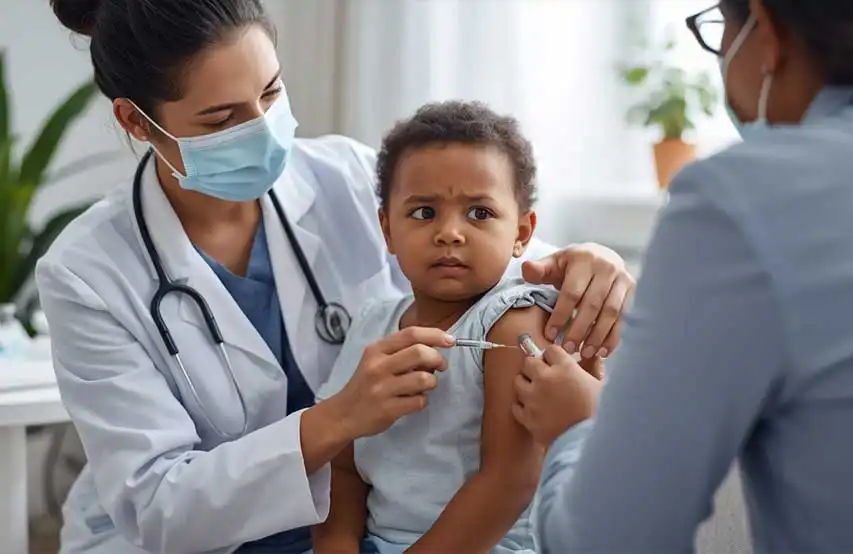5 Critical Covid-19 Vaccination Challenges Facing Parents of Young Children
For parents across the United States, navigating the health landscape for their young children has been a complex journey since the onset of the pandemic. Just as many felt they had found stable ground, a new set of daunting challenges is emerging for the coming fall. The very framework that provided protection for the most vulnerable—toddlers and infants—is facing a significant upheaval. Recent communications from federal health agencies indicate a potential major shift in vaccine availability and recommendations, creating a landscape of confusion and uncertainty. This alarming shift threatens to leave millions of children under five without clear access to crucial Covid-19 vaccines, placing the burden of complex medical decisions squarely on the shoulders of their parents. Understanding these five critical challenges is the first step toward advocating for clarity and protection for our youngest citizens.
The Stunning Threat to Vaccine Authorization for Covid-19
The most immediate and severe challenge is the potential loss of authorized vaccine options. According to an email from the CDC’s National Center for Immunization and Respiratory Diseases, the U.S. Food and Drug Administration (FDA) may not renew the authorization for Pfizer’s Covid-19 vaccine for children younger than five in the 2025-2026 season. This decision would directly impact the only vaccine specifically authorized for the 6-month to 4-year age group from Pfizer. Without this authorization, the vaccine simply cannot be legally administered to this demographic. This creates a precarious situation where a key tool for preventing severe illness, hospitalization, and long-term complications from Covid-19 could vanish from the pediatrician’s office, not due to inefficacy, but due to a regulatory decision that fails to prioritize this vulnerable population.
A Paradigm Shift: From Recommendation to “Shared Decision-Making”
Compounding the issue of availability is a major change in official guidance. In a significant policy shift, the CDC’s immunization schedule was modified to state that Covid-19 vaccinations for children would be based on “shared clinical decision-making” between a provider and a parent. This move away from a universal recommendation signals to many parents and pediatricians that the perceived urgency has diminished. However, this approach is fraught with complexity. As noted by Dr. Paul Offit, a pediatrician and director of the Vaccine Education Center at Children’s Hospital of Philadelphia, this “shared decision-making” is contradicted by the intention behind it. It places an immense burden on parents, who are not medical experts, to weigh complex virological data and personal risk factors, often without clear, consistent guidance. This policy creates a dangerous patchwork of protection where a child’s access to a vaccine depends heavily on their parents’ healthcare literacy and their physician’s personal stance.
The “Off-Label” Labyrinth for Covid-19 Protection
If Pfizer’s vaccine loses its authorization and the official guidance is merely a shared decision, what options remain? For many, the only path forward would be an “off-label” use of Moderna’s Covid-19 vaccine. This presents a third major challenge. Administering a vaccine off-label is a discretionary act for a pharmacist or physician. Many may be hesitant or outright refuse to do so due to liability concerns, a lack of clear protocol, or personal objections. This creates a postcode lottery for child healthcare, where availability depends on finding a willing provider. This labyrinthine process will inevitably create barriers to access, disproportionately affecting families in underserved communities with fewer healthcare resources and options, thereby widening existing health disparities.
Navigating Misinformation and Evolving Public Health Messaging
The fourth challenge exists in the psychological and informational sphere. Parents are already bombarded with conflicting messages about the risks of Covid-19 and the safety of vaccines. The new, less directive stance from the CDC may be misinterpreted by some as evidence that the vaccines are no longer necessary or are unsafe, despite overwhelming evidence to the contrary. This fuels the fire of misinformation and makes an already difficult decision nearly impossible for many families. The move to “shared decision-making” without a robust, parallel public education campaign to explain the continued benefits of vaccination for young children risks abdicating a core responsibility of public health: to provide clear, science-based guidance that people can trust and act upon.
The Path Forward: Advocacy and Clear Communication
The final challenge, therefore, is one of advocacy and clarity. Pediatricians and public health advocates are now tasked with filling the void left by muddled federal messaging. They must arm themselves with the latest data on the continued impact of Covid-19 on young children and communicate it effectively to worried parents. Furthermore, there is a pressing need for parental advocacy groups to demand clarity from the FDA and CDC. Questions must be answered: Why would authorization for a vital vaccine not be renewed? What is the long-term plan for protecting this age group? Ensuring the continued health of our children in the face of Covid-19 requires transparent communication from health authorities and a concerted effort to ensure that life-saving tools remain accessible to all who need them.

Reference Website:
https://edition.cnn.com/2025/08/12/health/covid-vaccine-children-pfizer-fda
Table of Contents
Sports: Sport Flash
World News: The News Grid
Environment News: Eco Alert
Business News: Biz Trend Now
Dailt News: Unbiased Daily
Realm News: Real Time Realm
Retrun to our Homepage


